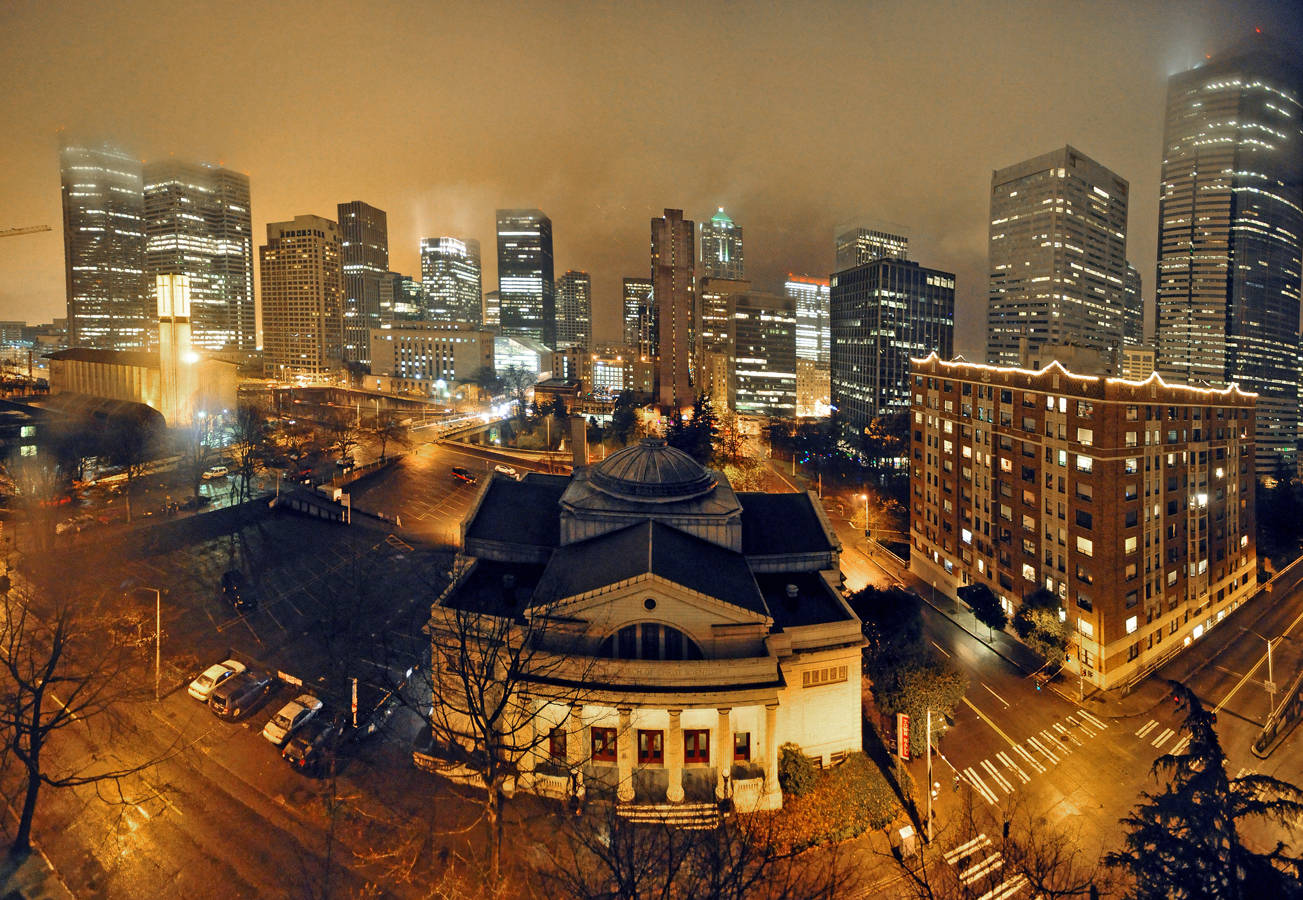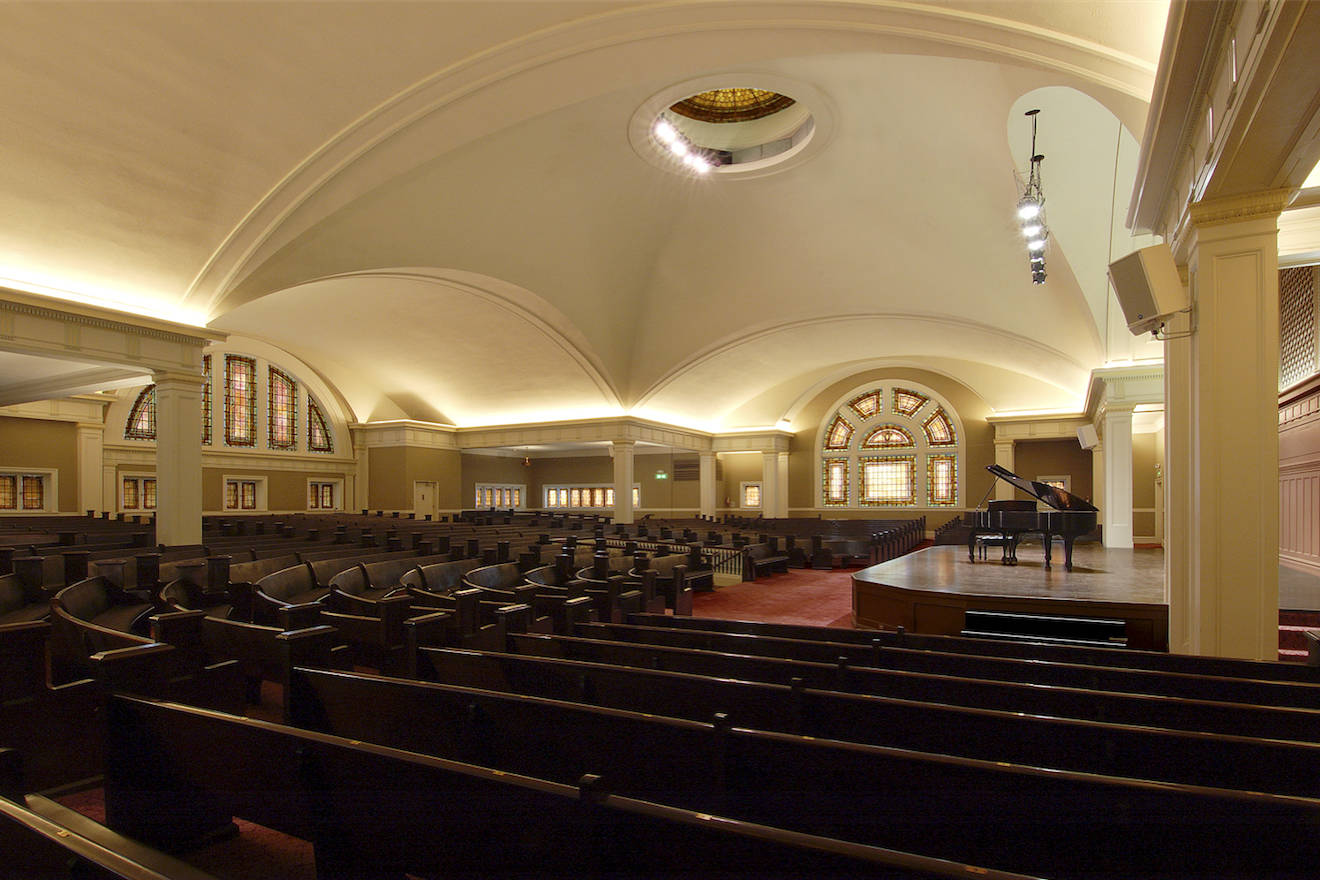Two days after the results of the 2016 presidential election shocked the nation, more than 800 citizens gathered under the vaulted ceilings of the Great Hall at 1119 8th Avenue in Seattle. Like it had so many times since its current tenant Town Hall Seattle was established in 1998, the hundred-year-old church building on First Hill served as a gathering place for the community to come together and engage. And on that night, like so many others, something magical occurred.
Those moments don’t just happen. They are the product of painstaking research and practice on the part of the artists and intellectuals who take the stage and engage with audiences every week. They are also the result of collaborations between numerous non-profits and Town Hall, which has provided Seattleites with a gateway to thousands of community-sourced cultural events.
Working with dozens of collaborators and community partners, including local booksellers, Seattle Arts & Lectures, University of Washington, Seattle Public Library, ACLU of Washington, City of Seattle, and Earshot Jazz, Town Hall produces a calendar of more than 400 events every year. Through subsidized rental rates and affordable ticket prices, the organization’s core commitment to accessibility invites diversity both in the audience and the breadth of presenters—from youth spelling bee contestants and artists-in-residence to science lecturers and political advocates.
With the community’s participation, Town Hall has become a place where moments turn into meaningful memories. Now, the organization is pausing to reflect on how its historic home has fostered community—and how it can best fulfill the community’s needs going forward. In the midst of a capital campaign to raise $25 million for renovations, Town Hall has generated nearly 75 percent of the funds necessary to break ground this summer.
“There isn’t anywhere else like Town Hall in the country,” says executive director Wier Harman. “Things that happen here matter to people. … [The renovation is] going to set the organization up to serve people for a very long time.”
Here, we offer a quick look back at just a few of Town Hall’s most memorable moments, starting with that night in November.
November 10, 2016 During the annual Ampersand Live event, presented by Forterra, more than 20 speakers took to the stage throughout the night—each delivering a slideshow, spoken word performance, or song that explained why they felt the Pacific Northwest is special and must be preserved. As the final presenter took his place, a hush fell over the packed hall. Tomo Nakayama was very familiar with this stage. Four years prior, the pianist and songwriter had served as an artist-in-residence at Town Hall. As he told the gathered crowd, he had been moved by the diversity of thought, inclusiveness, mutual respect, and civil discourse he had experienced there—all qualities that seemed to be threatened in the wake of the election. Onstage, in front of hundreds of people, Nakayama wept. Then, turning to the piano, he began to play “We Shall Overcome.” Feeling the pull of this powerful anthem, audience members rose to their feet, interlocking arms with their neighbors and joining together in song—and tears. “It made me realize how badly we needed that catharsis, after such a shockingly cynical result to our election, to reassure each other that goodness and humanity still exist in the world,” Nakayama recalls. “I cried and mourned, and felt a new power and responsibility as a performer.”
March 10, 2014 U.S. Supreme Court Justice Sonia Sotomayor visited Town Hall for a University Bookstore event, during which she discussed her memoir, My Beloved World—a chronicle of her journey from housing projects in the Bronx to the nation’s highest court. The sold out crowd had arrived early to go through a security screening—complete with bomb-detecting dogs—and sat as Seattle author Eric Liu conversed with the justice about her childhood, which was marked by childhood diabetes and her father’s alcoholism, among other obstacles. But the moment most likely to live in the memories of those present came as the night was drawing to a close. It was then that an 8-year-old girl stepped up to the microphone and queried the judge: What, she asked, would the justice wish for if she had a magic wand? Sotomayor addressed the girl directly. “I would make sure every child in this country and in the world could have the same quality of education,” she said. “If you can learn something new every day, it’s such an adventure. I want that adventure for every child.” The audience exploded in applause.
November 27, 2011 Classical cellist, composer, and artistic director of the Town Music series Joshua Roman drew a packed house for a rare performance of the Bach Cello Suites, all six of them. While the then-27-year-old had performed each of the suites individually before, it was at Town Hall that he put them all together in a marathon solo performance. While the performance of the suites themselves takes two-and-a-half hours, a two-hour dinner intermission was added to the program to allow Roman to take a break from the unyielding physical demand of the solo performance. “This is the apex of the solo cello repertoire,” says Roman, who is currently preparing for his tenth season as artistic director. “It was a revelation in how I viewed them, in their structure and in their impact. When you sit in front of an audience, the energy is so different. The support and enthusiasm of an audience for such a big performance was incredible.”
April 6, 2011 At the peak of his popularity, American physicist and futurist Michio Kaku was slated to discuss his latest book Physics of the Future. Four hours before the event, the author’s publicist reached out to the Town Hall staff. Kaku was recovering from a bout of laryngitis, it turned out, and would be unable to speak. Not wanting to cancel the evening on such short notice, they asked if the executive director might be willing to lend a hand, and a set of vocal chords. That night, a rapt crowd witnessed Kaku and Wier Harman presenting Kaku’s work together—through a charming interplay of unspoken gestures. “Even though I was the one reading the talk, he was the one delivering the presentation,” Harman says now. “His charisma and ability to communicate—his smiles, his nods, his winks to the audience—really carried the event. He was able to turn this moment, this liability, into a compelling presentation.”
March 29, 2011 As it does every so often, Seattle felt like the center of the universe on this night when media pundit, activist, and Savage Love columnist Dan Savage and his husband Terry Miller invited people from around the world to discuss the realities of bullying in the young LGBT community in the Great Hall. In celebration of the publication of their book It Gets Better: Coming Out, Overcoming Bullying and Creating a Life Worth Living, the two authors projected videos of adults and teens sharing their stories and encouragement as part of the viral It Gets Better Project. It wasn’t the only time that Town Hall has created a safe space to talk frankly about a difficult, often taboo, subject, but it was perhaps the most moving. As one event staffer put it, “This event started out good. Then it just got better.”
Town Hall Seattle’s historic building is turning 100, and it needs some love. A top-to-bottom renovation will preserve the landmark’s historic look and feel while making critical infrastructure, seismic, and performance advances. With state-of-the-art lighting and sound systems, a new downtown-facing entrance, and new multilevel restrooms, Town Hall will be more accessible, more comfortable, and more vibrant than ever. Learn more and get involved at townhallseattle.org.








